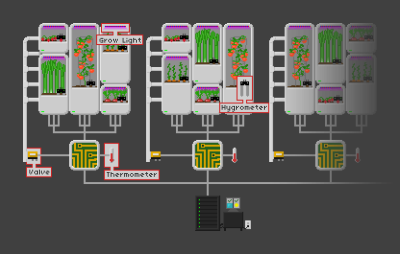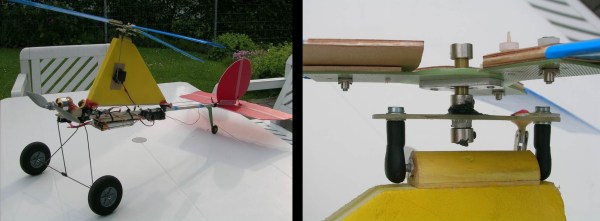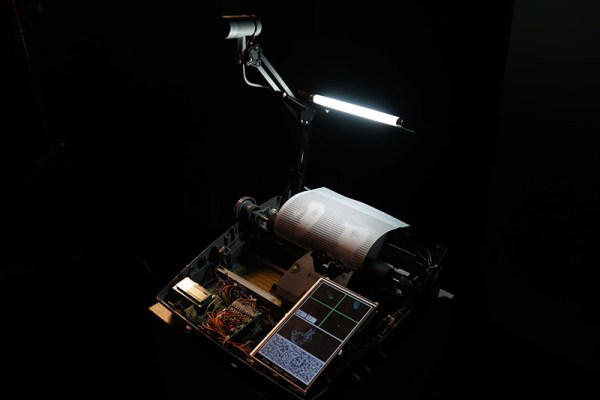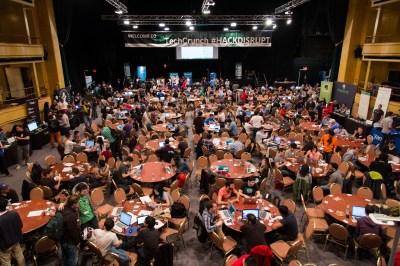You’ve probably heard the term food desert: locations where it’s difficult to get access to fresh fruits and vegetables. One way to help alleviate the problem is to promote urban farming. This week we challenged you to think of ideas that would make growing fresh food in urban areas easier and more enticing. Let’s take a look:
The IKEA Model:
 One concept that was popular with this week’s theme was ready-to assemble gardening kits. From personal experience I think this is of huge importance. Once upon a time in a crappy apartment far, far away my wife and I set out to grow tomatoes on the balcony. The plants flourished and bore fruit which the squirrel population of the neighborhood immediately stole while still green. I built this produce cage the following year and we were able to enjoy the fruit of our labors. But not everyone can whip up such a solution without help.
One concept that was popular with this week’s theme was ready-to assemble gardening kits. From personal experience I think this is of huge importance. Once upon a time in a crappy apartment far, far away my wife and I set out to grow tomatoes on the balcony. The plants flourished and bore fruit which the squirrel population of the neighborhood immediately stole while still green. I built this produce cage the following year and we were able to enjoy the fruit of our labors. But not everyone can whip up such a solution without help.
Aker is a set of designs for a modular farming system. The idea is to find a hackerspace or other group with a CNC router and use the plans to cut out different farming “furniture” like a chicken coop, tiered gardening container rack, a wall garden, compost system, and a bee hive. The coop design would serve as caged garden if need be.
Along the same vein is [Eric’s] Urban Gardening IKEA Style. He’s excited to pass along the knowledge he has accumulated over the years. Part of this is a simple to build gardening table that holds rectangular potting containers.
Modular Greenhouse:

Next up is the concept of modular farming. We like this because the gardens can be scaled based on available space.
Seen here is the Modular Vertical Farming mockup. The system specs different size and features for each pod based on what is being grown inside. Also included in the concept is a monitoring and feedback system which will help each urban farmer achieve success.
Combining modularity with water conservation is the Hydropod project. It’s not purely hydroponics, but the vertical cylinders are designed to pump water up to the top and reclaim it as it exits the bottom.
We don’t want to move on without a brief mention of the HydroPI Garduino. Kudos on maximum-buzz-wordiness in the title. We’re into the concept of including common tools to help monitor and control this hydroponic garden. But for city-dwellers who frequently move, the portable emphasis is valuable.
Uber-Conservation:
 This one is quite an interesting thought. If you live in a climate where air conditioning is used constantly, chances are pretty good that the humidity the condenser coil removes from the air is going right down the drain. The Condesnate Capture for Micro-Irrigation project wants to change that by sequestering the water for the next urban garden irrigation cycle. We’d love to see some solid data on average condensate output per square foot of building.
This one is quite an interesting thought. If you live in a climate where air conditioning is used constantly, chances are pretty good that the humidity the condenser coil removes from the air is going right down the drain. The Condesnate Capture for Micro-Irrigation project wants to change that by sequestering the water for the next urban garden irrigation cycle. We’d love to see some solid data on average condensate output per square foot of building.
This Week’s Winners

First place this week goes to Aker and will receive an RGB Shades Kit.
Second place this week goes to Modular Vertical Farming and will receive a GoodFET42 JTAG programmer and debugger.
Third place this week goes to Condensate Capture for Micro-Irrigation and will receive a Hackaday CRT Android tee.
Next Week’s Theme
We’re moving to a new set of weekly giveaways that are more numerous and valuable. This week we’ll be giving away thirty (30) prizes. Each will be a $50 code to spin some PCBs. More details on that in our next Time for the Prize post. For now make sure you submit an official entry. Start your project on Hackaday.io and use the “Submit-To” button below the picture on the left to submit it for the 2015 Hackaday Prize.





 One concept that was popular with this week’s theme was ready-to assemble gardening kits. From personal experience I think this is of huge importance. Once upon a time in a crappy apartment far, far away my wife and I set out to grow tomatoes on the balcony. The plants flourished and bore fruit which the squirrel population of the neighborhood immediately stole while still green. I built this produce cage the following year and we were able to enjoy the fruit of our labors. But not everyone can whip up such a solution without help.
One concept that was popular with this week’s theme was ready-to assemble gardening kits. From personal experience I think this is of huge importance. Once upon a time in a crappy apartment far, far away my wife and I set out to grow tomatoes on the balcony. The plants flourished and bore fruit which the squirrel population of the neighborhood immediately stole while still green. I built this produce cage the following year and we were able to enjoy the fruit of our labors. But not everyone can whip up such a solution without help.
 This one is quite an interesting thought. If you live in a climate where air conditioning is used constantly, chances are pretty good that the humidity the condenser coil removes from the air is going right down the drain. The
This one is quite an interesting thought. If you live in a climate where air conditioning is used constantly, chances are pretty good that the humidity the condenser coil removes from the air is going right down the drain. The 








 Check out these
Check out these 










